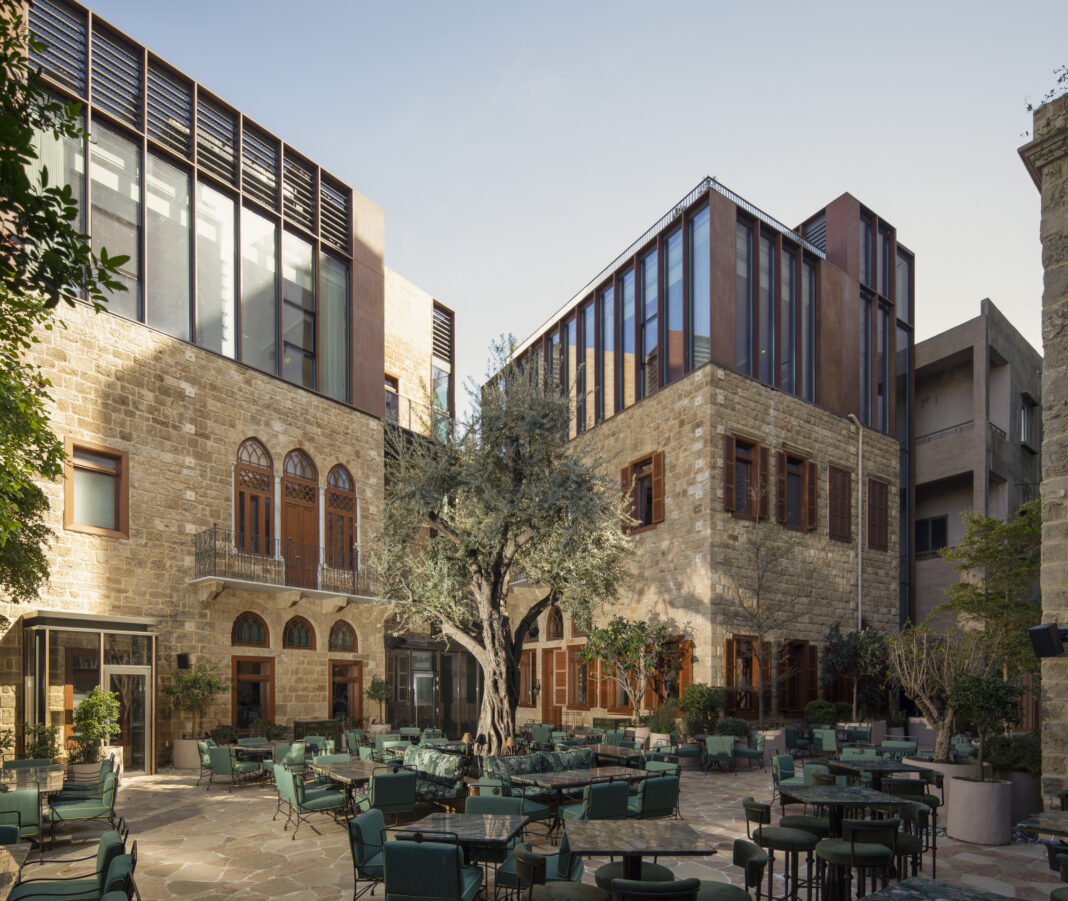- Area:
1500 m²
Year:
2025
-
Lead Architects:
Dagher Hanna & Partners
Text description provided by the architects. Beihouse is located in the heart of Beirut’s historic Gemmayzeh district, where old and new architecture coexist. This transformative project reimagines three 19th-century Lebanese houses and their central courtyard, blending the preservation of Beirut’s architectural heritage with a contemporary vision. Severely damaged on August 4, 2020, by the port explosion, these buildings have been thoughtfully restored as a dynamic social club—a space for local gatherings and international visitors alike. In collaboration with architects Dagher Hanna & Partners and interior designers Linda Boronkay Design Studio, the new owner ensured that the historic buildings would be preserved and protected from demolition.
The design carefully merges traditional materials, such as stone and wood, with modern elements like corten steel, which is used for cladding and finishes. This juxtaposition honors the industrial character of Beirut’s port while reflecting the site’s historical roots. Steel structures and high-performance glass were integrated to reinforce the existing buildings and allow for the addition of new, modern features. The project also celebrated Lebanese craftsmanship, with local artisans reconstructing key elements using traditional techniques.
The historic buildings were adapted to accommodate new programs, with two of the structures receiving additional floors and the third extended with a double-height volume. A floating terrace on the third building spans both the old and new sections, creating a harmonious design that respects both the past and the present. From above, the subtle distinctions between the historical and contemporary sections blend seamlessly, offering expansive views of Beirut’s port and the Mediterranean Sea.
Visitors approach Beihouse through a narrow alleyway, leading them to the central courtyard, where a century-old olive tree serves as the focal point. The garden-inspired courtyard is framed by lush greenery and rustic pots, offering a serene escape from the bustling city. The new bar opens to the courtyard with retractable glass walls, transitioning the space from an intimate indoor setting to an open-air venue in the warmer months. Adjacent to the courtyard, the lounge area seamlessly blends contemporary and original architectural elements, while a ceramics workshop and exhibition space activate the upper levels.
The second building houses a restaurant on the ground floor and a private gathering space on the first floor. The third building supports the hospitality functions, including service areas. Office spaces occupy the second floor of both buildings, connected by a steel bridge that reflects Beihouse’s ability to shift from day to night. Sculptural corten steel staircases wind through all three buildings, while three strategically placed elevators ensure seamless connectivity. A panoramic elevator offers a unique vertical experience, and steel bridges link the structures, creating balcony-like spaces. Triple-glazed windows reduce urban noise, while corten fins provide solar shading.
Beihouse is a testament to Beirut’s resilience, embracing transformation while honoring its architectural past. Through sensitive interventions and modern additions, this project reinterprets heritage for the future, ensuring that history is not only preserved but also continuously evolving.
“We wanted to carry the buildings forward, not just as a space, but as a testament to Beirut’s ongoing story—a city that continually reinvents itself. By honoring the past, we’ve created a place that draws strength from the city’s history while paving the way for its future growth and transformation,” says Nadine Harake, Lead Architect at DHP for Beihouse.

